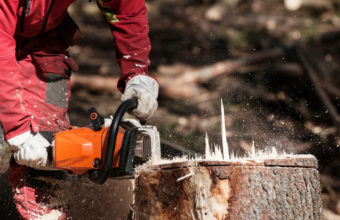Determining if a tree needs to be trimmed or pruned involves assessing its health, structure, and safety. Regular tree inspection can help you identify signs that indicate the need for pruning.
Here are some common indicators that a tree may need trimming…
- Dead or Dying Branches – Dead branches are a clear sign that a tree needs pruning. Dead or dying branches can pose safety risks as they may fall during storms or windy conditions.
- Disease or Pest Infestations – If you notice signs of disease or pest infestations on a tree, such as discolored or wilting leaves, unusual growths, or holes in the bark, pruning may be necessary to remove affected branches and prevent the issue from spreading.
- Overcrowded Canopy – Trees with crowded canopies may benefit from selective pruning to improve air circulation and reduce the risk of disease. Removing some branches can also enhance light penetration, benefiting both the tree and the surrounding vegetation.
- Crossing or Rubbing Branches – Branches that cross or rub against each other can cause wounds and lead to disease entry points. Pruning can alleviate this problem by removing one of the competing branches.
- Low-Hanging or Obstructive Branches – Branches that hang too low can pose safety hazards by obstructing pathways, driveways, or visibility. Pruning these branches can enhance safety and clearance.
- Storm Damage – After severe weather events, inspect trees for broken or damaged branches. Promptly removing damaged branches can prevent further stress to the tree and reduce the risk of additional damage during future storms.
- Structural Issues – Trees with poor or irregular branch structure may benefit from structural pruning to improve stability and reduce the risk of branch failure.
- Thinning for Light – In dense canopies, thinning may be necessary to allow more sunlight to penetrate. This can benefit both the tree and the vegetation below.
- Size and Location – Trees planted near structures, power lines, or other structures may need periodic pruning to maintain safe clearance and prevent damage. Additionally, trees that have grown too large for their space may require reduction in size.
- Seasonal Maintenance – Routine pruning during the dormant season can help maintain the overall health and shape of the tree.
When assessing whether a tree needs pruning, consider the specific goals and objectives of the pruning. Pruning should be done with a clear purpose in mind, whether it’s for safety, health, aesthetics, or tree structure improvement. If you’re uncertain about whether a tree needs trimming or how to proceed, consult with a certified arborist or tree care professional. They can provide expert advice and perform the necessary pruning to ensure the tree’s well-being and safety.






